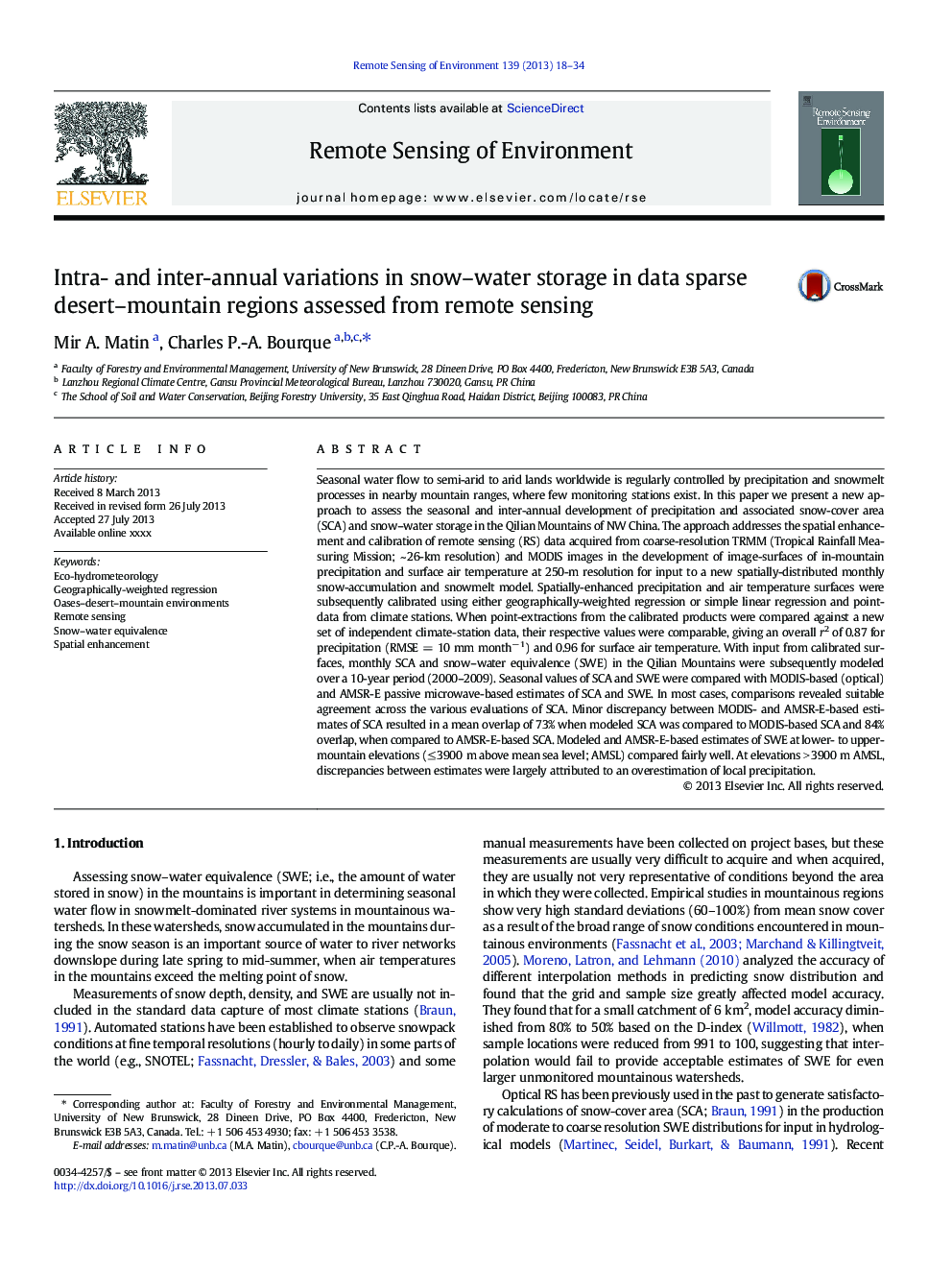| Article ID | Journal | Published Year | Pages | File Type |
|---|---|---|---|---|
| 6347115 | Remote Sensing of Environment | 2013 | 17 Pages |
Abstract
Seasonal water flow to semi-arid to arid lands worldwide is regularly controlled by precipitation and snowmelt processes in nearby mountain ranges, where few monitoring stations exist. In this paper we present a new approach to assess the seasonal and inter-annual development of precipitation and associated snow-cover area (SCA) and snow-water storage in the Qilian Mountains of NW China. The approach addresses the spatial enhancement and calibration of remote sensing (RS) data acquired from coarse-resolution TRMM (Tropical Rainfall Measuring Mission; ~ 26-km resolution) and MODIS images in the development of image-surfaces of in-mountain precipitation and surface air temperature at 250-m resolution for input to a new spatially-distributed monthly snow-accumulation and snowmelt model. Spatially-enhanced precipitation and air temperature surfaces were subsequently calibrated using either geographically-weighted regression or simple linear regression and point-data from climate stations. When point-extractions from the calibrated products were compared against a new set of independent climate-station data, their respective values were comparable, giving an overall r2 of 0.87 for precipitation (RMSE = 10 mm monthâ 1) and 0.96 for surface air temperature. With input from calibrated surfaces, monthly SCA and snow-water equivalence (SWE) in the Qilian Mountains were subsequently modeled over a 10-year period (2000-2009). Seasonal values of SCA and SWE were compared with MODIS-based (optical) and AMSR-E passive microwave-based estimates of SCA and SWE. In most cases, comparisons revealed suitable agreement across the various evaluations of SCA. Minor discrepancy between MODIS- and AMSR-E-based estimates of SCA resulted in a mean overlap of 73% when modeled SCA was compared to MODIS-based SCA and 84% overlap, when compared to AMSR-E-based SCA. Modeled and AMSR-E-based estimates of SWE at lower- to upper-mountain elevations (â¤Â 3900 m above mean sea level; AMSL) compared fairly well. At elevations > 3900 m AMSL, discrepancies between estimates were largely attributed to an overestimation of local precipitation.
Keywords
Related Topics
Physical Sciences and Engineering
Earth and Planetary Sciences
Computers in Earth Sciences
Authors
Mir A. Matin, Charles P.-A. Bourque,
